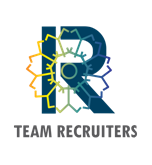
“There is something that is much scarcer, something rarer than ability. It is the ability to recognise ability” – Robert Half
Performance Management is an ongoing course of action of conversing and simplifying role responsibilities, urgencies, performance potentials and expansion projection in alignment with an organisation’s strategic goals. It’s a proactive system of managing employee performance for driving the individual and the organisation towards desired performance and results for attaining distinctions in performance. Compass of Performance Management extends beyond yearly assessment and is more clients centric. It is about measuring, managing and improving the contribution of the individual to the organisation.
Traditionally, performance management had been a forward-looking solution based entirely on hindsight. But organizational culture and practices are evolving to one of continuous feedback and today powered by technology, where managers can foresee problems based on current employee performance and initiate any form of course correction to bring the employee back on track.
The goal is to ensure that employees are performing efficiently throughout the year, and in the process, address any issues that may arise along the way that affect employee performance.
Planning: This entails setting employees’ goals and communicating these goals with them. These goals should be part of the job description to attract quality candidates. Depending on the performance management process in your organization, you may want to assign a percentage to each of these goals to be able to evaluate their achievement.
Monitoring: Managers are required to monitor the employee’s performance on the goal. This is where continuous performance management comes into the picture.
Developing: The data obtained during the monitoring phase is used to improve the performance of employees. It may require suggesting refresher courses, providing an assignment that helps them improve their knowledge and performance on the job, or altering the course of employee development to enhance performance or sustain excellence.
Rating: Ratings are essential to identify the state of employee performance and implement changes accordingly. Both peers and managers can provide these ratings for 360-degree feedback.
Rewarding: Recognizing and rewarding good performance is essential to the performance management process, as well as an important part of employee engagement.
We ardently look forward to work with clients for long term associations to provide back office support on daily basis. At present organisations are exposed to fierce competition both internally and externally which call for complete make-over of existing HR Practices claiming added sophisticated approach towards designing, developing and implementing customised solutions.
Nowadays HR practices have moved ahead to embrace:
- Introductory meeting to identify needs, establishing target and working out developmental strategy to help implementation.
- Seeking quality feedback and on detection of any variance between performance and target, arranging desired support.
- Finally discussing the scope of such tailor made solutions and make sure for the customer satisfaction.
Most, progressive establishments ensure that their HR practices are at par with the existing competition in the industry. Accurate and timely information is increasingly necessary to make important decisions in the interest of short term and long term goals of the organisation.


Comments are closed.